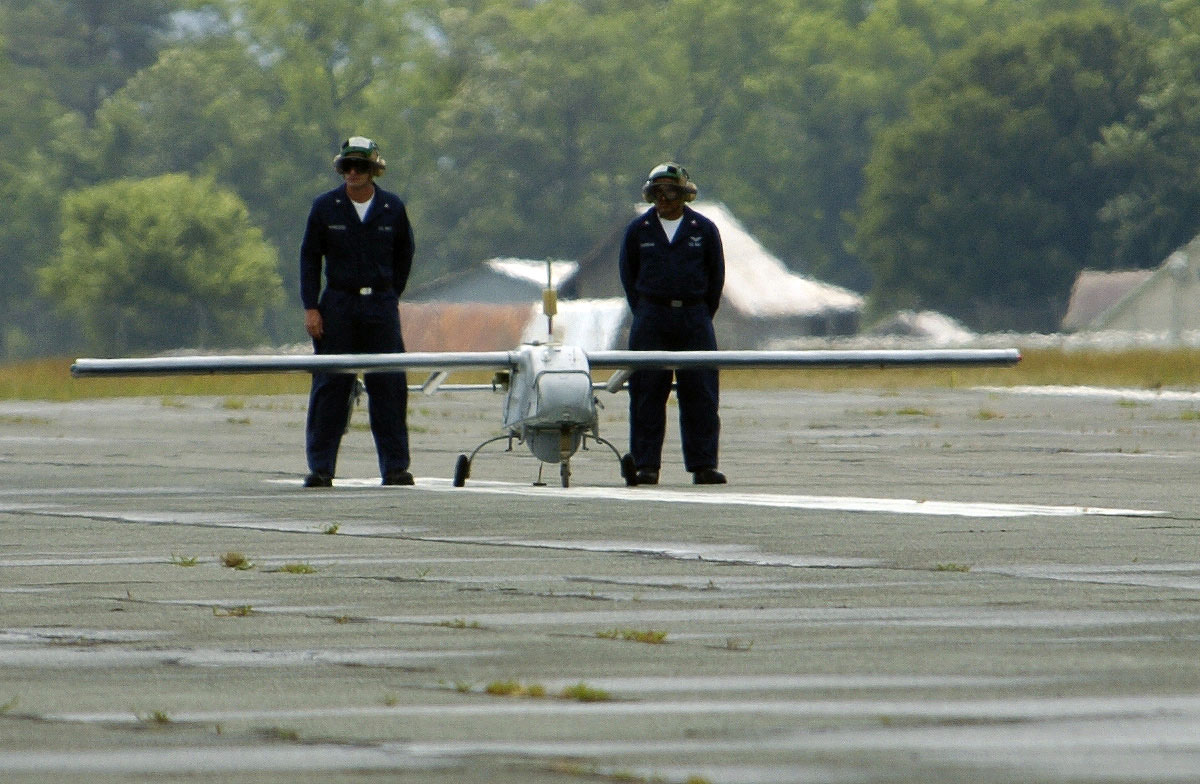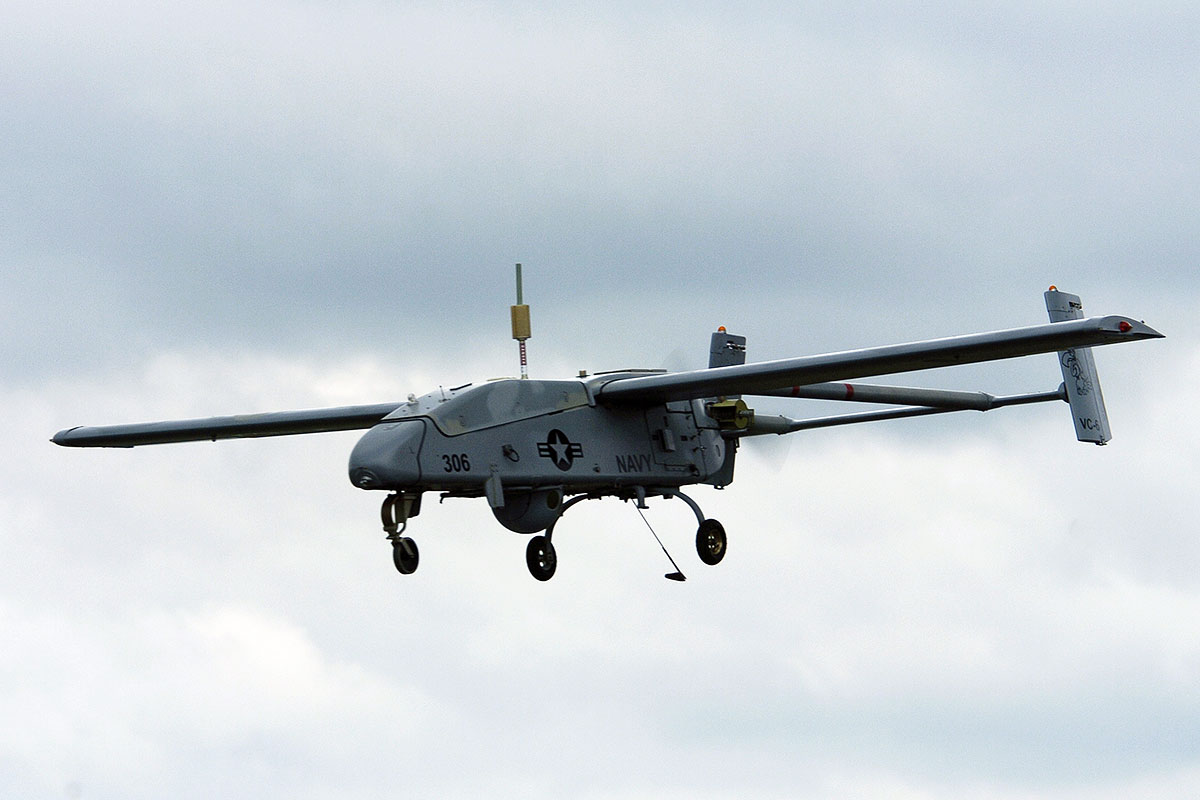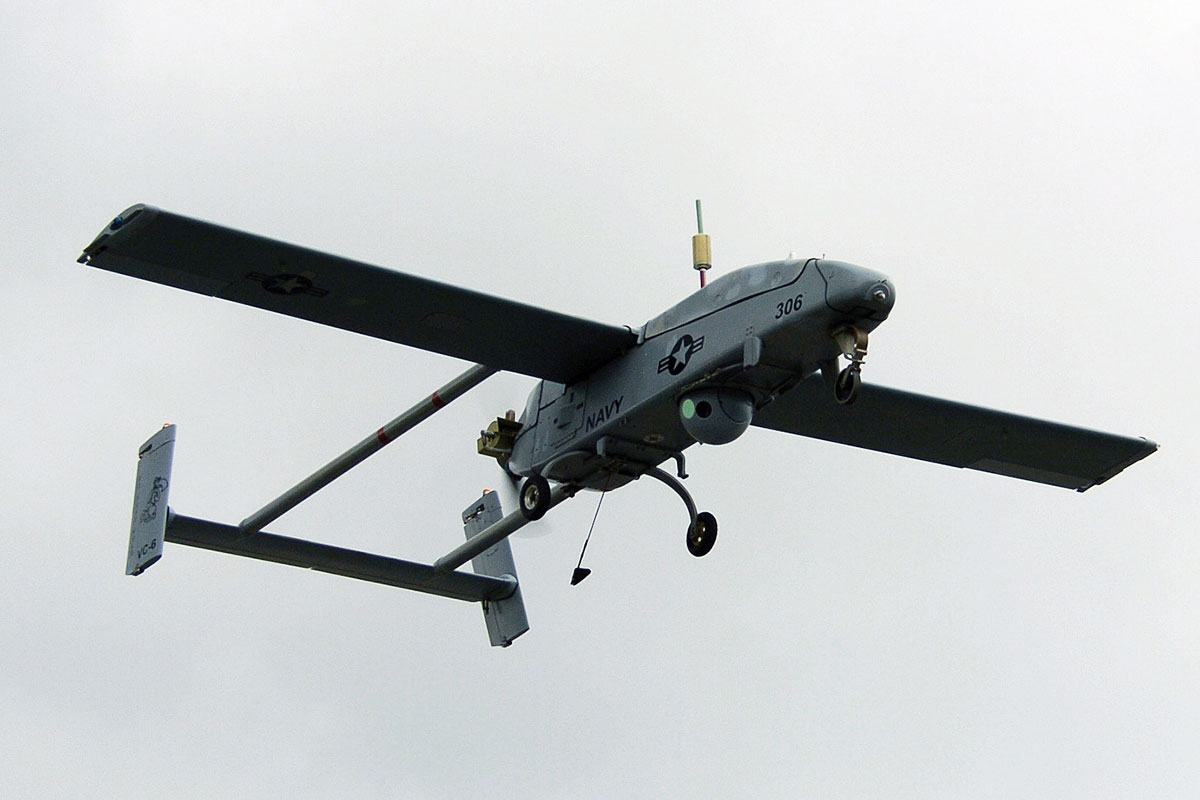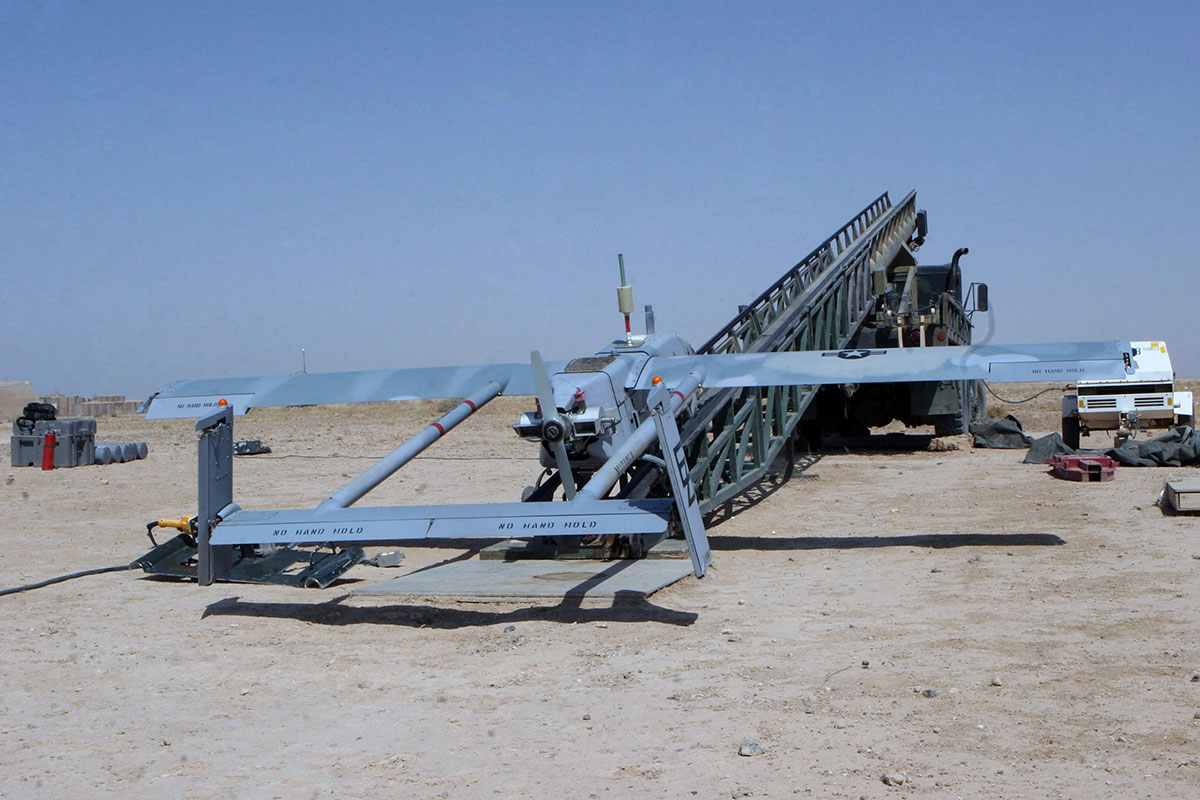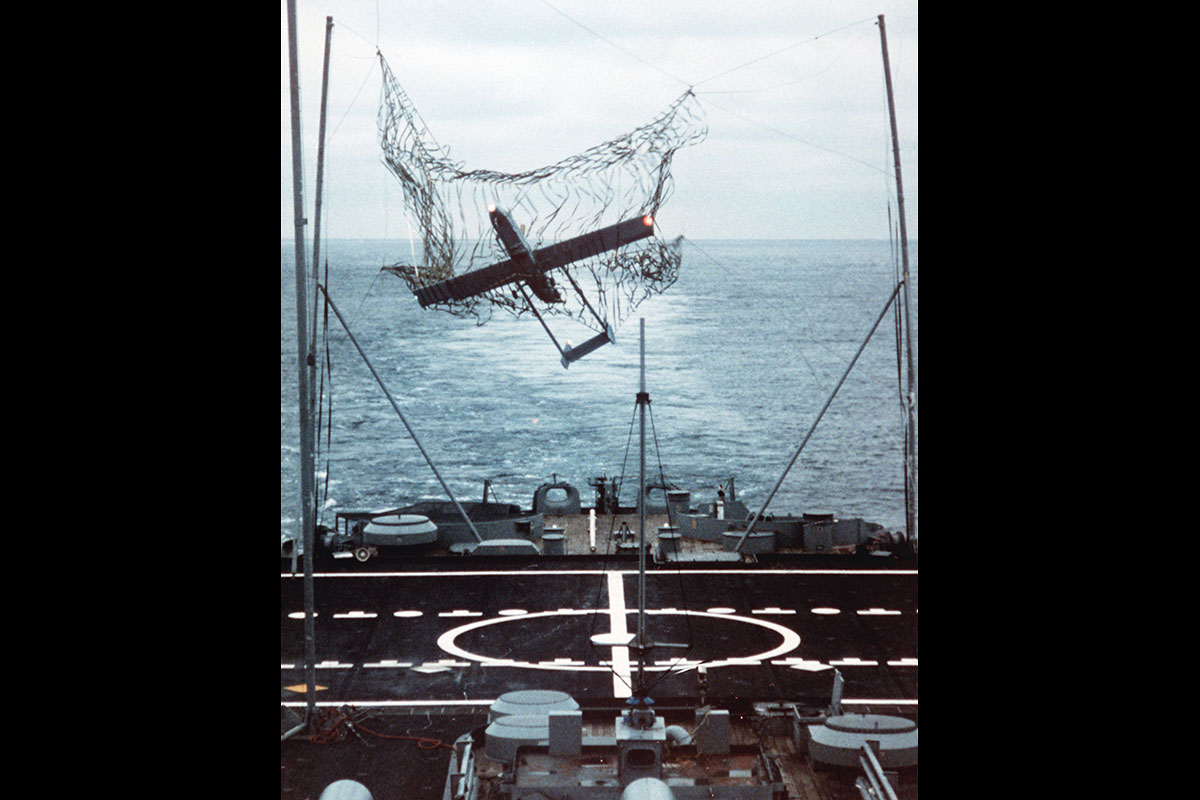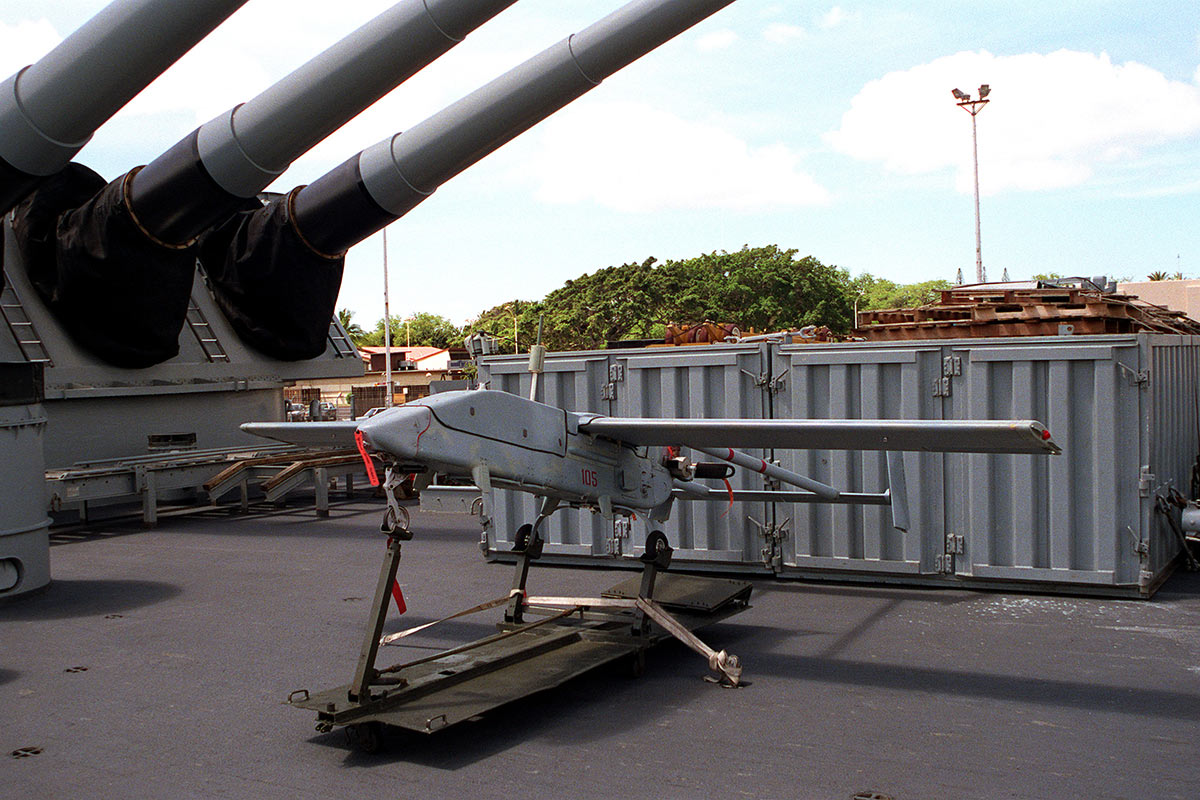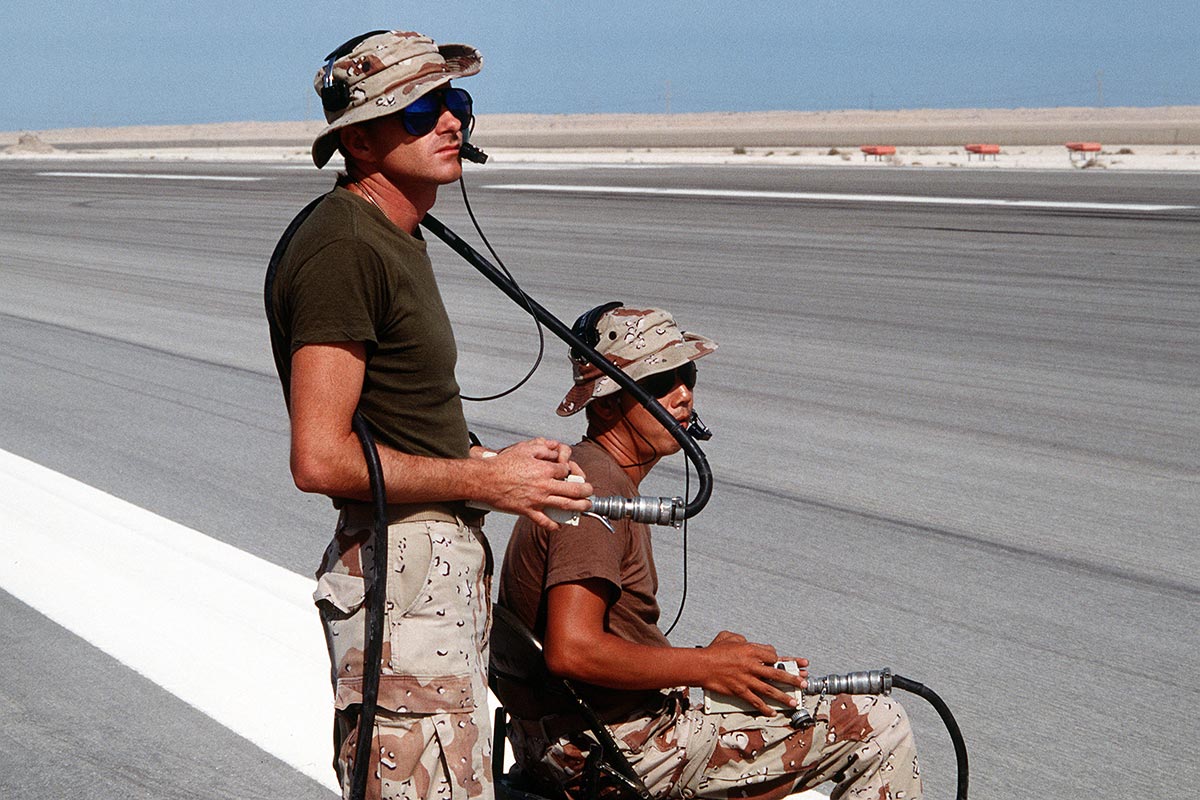Contractor: Pioneer UAV Inc.
Service: United States Navy, United States Marine Corps
Propulsion: Sachs SF-350 gasoline engine, 26 horsepower
Weight: Max design gross take-off: 416 pounds (188.69 kg).
Airspeed: 110 knots
Ceiling: 15,000 ft
Range: 100+ nm
The RQ-2A represents one of the U.S. Navy’s first unmanned surveillance drones to enter the fleet. Originally designed jointly by the Israeli companies AAI Corp. and Israeli Aircraft Industries, the Navy adapted the original design for shipboard operation deploying from recently-recommissioned battleships in the 1980s. The UAV was later adopted by the Marine Corps for ground-based operations.
The Pioneer UAV system performs a wide variety of reconnaissance, surveillance, target acquisition and battle damage assessment missions. The low radar cross section, low infrared signature and remote control versatility provides a degree of cover for the aircraft. Pioneer provides the tactical commander with real-time images of the battlefield or target.
In the 1980s, U.S. military operations in Grenada, Lebanon, and Libya identified a need for an on-call, inexpensive, unmanned, over-the-horizon targeting, reconnaissance, and battle damage assessment (BDA) capability for local commanders. As a result, in July 1985, the Secretary of the Navy directed the expeditious acquisition of UAV systems for fleet operations using nondevelopmental technology. A competitive fly-off was conducted and two Pioneer systems were procured in December 1985 for testing during 1986. Initial system delivery was made in July 1986 and subsequently deployed on the battleship USS Iowa (BB 61) in December 1986.
During 1987, three additional systems were delivered to the Marine Corps where they were operationally deployed on board LHA-class vessels as well as with several land-based units. Pioneer has operated in many theaters including the Persian Gulf, Bosnia, Yugoslavia and Somalia. Marine Corps Unmanned Aerial Vehicle Squadrons deployed to Iraq in 2003 during Operation Iraqi Freedom and currently support Marine operations in Iraq. The Pioneer is launched using rocket-assisted takeoff or pneumatic rails and is recovered by net at sea or by landing ashore on a 200-by-75-meter unimproved field. The Pioneer carries a payload of 65-100 pounds -- including an electro-optical and infrared camera -- and can patrol for more than five hours. Control of the RQ-2B can be handed off from control station to control station, thereby increasing the vehicle’s range and allowing launch from one site and recovery at another. With a ManPackable Receiving Station, Pioneer provides portable, payload imagery to forward deployed Marines. Pioneer has flown other payloads including an acoustic-wave vapor sensor and a hyperspectral imagery sensor.
Desert Shield/Storm Anecdote: The surrender of Iraqi troops to an unmanned aerial vehicle did actually happen. All of the UAV units at various times had individuals or groups attempt to signal the Pioneer, possibly to indicate willingness to surrender. However, the most famous incident occurred when USS Missouri (BB 63), using her Pioneer to spot 16 inch gunfire, devastated the defenses of Faylaka Island off the coast near Kuwait City. Shortly thereafter, while still over the horizon and invisible to the defenders, the USS Wisconsin (BB 64) sent her Pioneer over the island at low altitude.
When the UAV came over the island, the defenders heard the obnoxious sound of the two-cycle engine since the air vehicle was intentionally flown low to let the Iraqis know that they were being targeted. Recognizing that with the "vulture" overhead, there would soon be more of those 2,000-pound naval gunfire rounds landing on their positions with the same accuracy, the Iraqis made the right choice and, using handkerchiefs, undershirts, and bedsheets, they signaled their desire to surrender. Imagine the consternation of the Pioneer aircrew who called the commanding officer of Wisconsin and asked plaintively, "Sir, they want to surrender, what should I do with them?"
The RQ-2A Pioneer is operated by four Naval aircraft squadrons: VMU-1 & VMU-2 (USMC) and VC-6 and Training Wing Six (USN). The VC-6 system at Patuxent River Naval Air Station, Maryland, supports software changes, hardware acceptance, test and evaluation of potential payloads and technology developments to meet future UAV requirements. Training Wing Six at Naval Air Station Whiting Field, Florida trains all Navy and Marine Corps Pioneer operators and maintainers.
